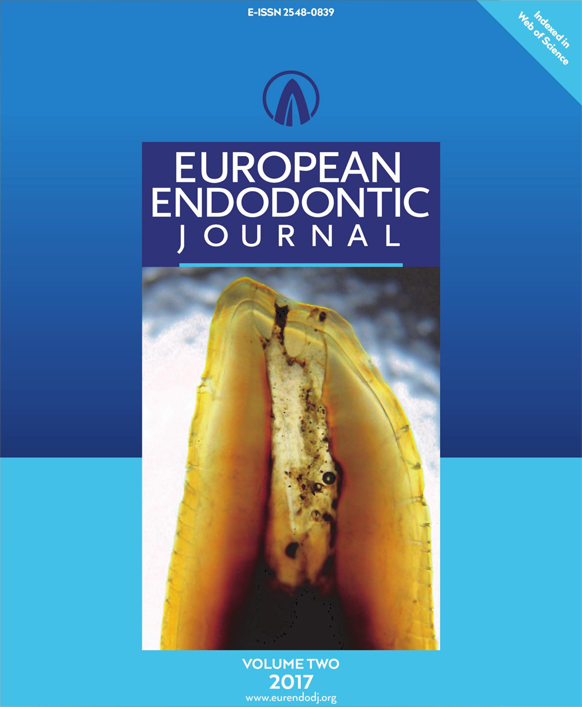
European Endodontic Journal
Yazarlar: Divya Nangia, Ruchika Roongta Nawal, Seema Yadav, Sangeeta Talwa
Konular:-
DOI:10.14744/eej.2019.58076
Anahtar Kelimeler: Apical width,Instrumentation and rotary,Irrigation,SEM,XP-Endo finisher
Özet: Chemical disinfection along with mechanical instrumentation, is required to achieve debridement, especially in apical third of root canal. Thus, this study aimed to compare the influence of final apical width on the smear layer removal efficacy of XP Endo Finisher and Endodontic Needle, in mandibular premolars. Methods: 40 single-rooted mandibular premolars were included in the study, prepared using K3 XF rotary files (SybronEndo, Orange, CA). The samples were equally divided into 4 groups: Group 1: Master apical file 30/0.06 taper, final irrigation with endodontic needle (30G Max I probe, Dentsply International, York PA); Group 2: Master apical file 40/0.06 taper, final irrigation with endodontic needle; Group 3: Master apical file 30/0.06 taper, final irrigation with XP-Endo Finisher (FKG Dentaire, La Chaux-de-Fonds, Switzerland); Group 4: Master apical file 40/0.06 taper, final irrigation with XP-Endo Finisher. Smear layer and debris scores were given using SEM. Results: Group 3 and 4 performed significantly better than group 1 & 2 (P<0.05). No significant difference was observed in Group 1&2 (P>0.05); and Group 3&4 (P>0.05). Significantly higher scores were observed in the apical third, as compared to other sections of the root canal, in all the 4 groups. Conclusion: Increase in the final apical width did not significantly improve root canal cleanliness for both XP Endo Finisher and endodontic needle. However, XP endo finisher proved to be significantly better than the endodontic needle.